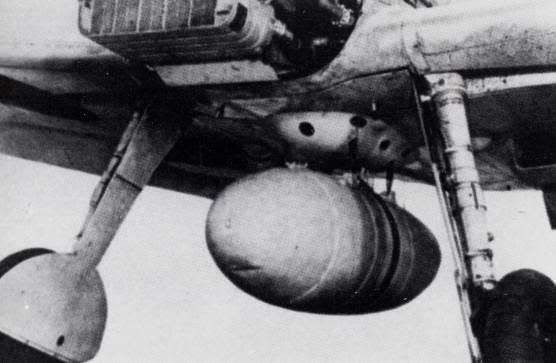Stalkervision had asked this quiestion over Ubi board. Appearantly, he did not like the answer for he certainly does not quote what he learned there.
 http://forums.ubi.com/eve/forums/a/t...3/m/1321030306
http://forums.ubi.com/eve/forums/a/t...3/m/1321030306
It`s worth reading the thread.
But to summerize, there`s absolutely no evidence of plywood droptanks ever being used operationally on Bf 109Es in the Battle of Britain to our very best knowledge. It`s probably a myth originating from some older, poorly researched (for tech details) BoB books.
In fact, they used light metal alumium tanks from the beginning till the end. These were evidently originally developed for the long-range Ju 87R, and were subsequently used on the Bf 109E-7 that first carried the neccesary piping for the droptank.
E-7s were introduced to service and combat in 26 August 1940. 186 was produced until the end of the Battle, 31 October 1940, and 452 in total until mid-1941, when Emil production ended.
It`s somewhat unclear wheter E-7s had DB 601Aa or the more powerful DB 601N engines, or a mix of these two engines. E-7s can be identified from their pointed prop spinner (however, later on many E-4s etc. were retrofitted with the neccesary equipment).
According to Rechlin`s 109E range tables, at 5km altitude using a the 300 liter single droptank extended range and endurance to 920km and 1h 50min at 500/520km/h, 1165 km and 2h 50min at 410/430 km/h, and 1325 km abd 3h 50min at 330/350 km/h cruise speed (droptank on/off).
Here`s a picture from the E-7`s German manual, evidently an alumium drop tank of the well known pattern.

E-7 in flight, again, the same metal droptank :

The pictures of plywood droptanks stalkervision is showing are way too big to fit on the 109, they are actually experimental droptanks for the Me 262 that were not used in service.